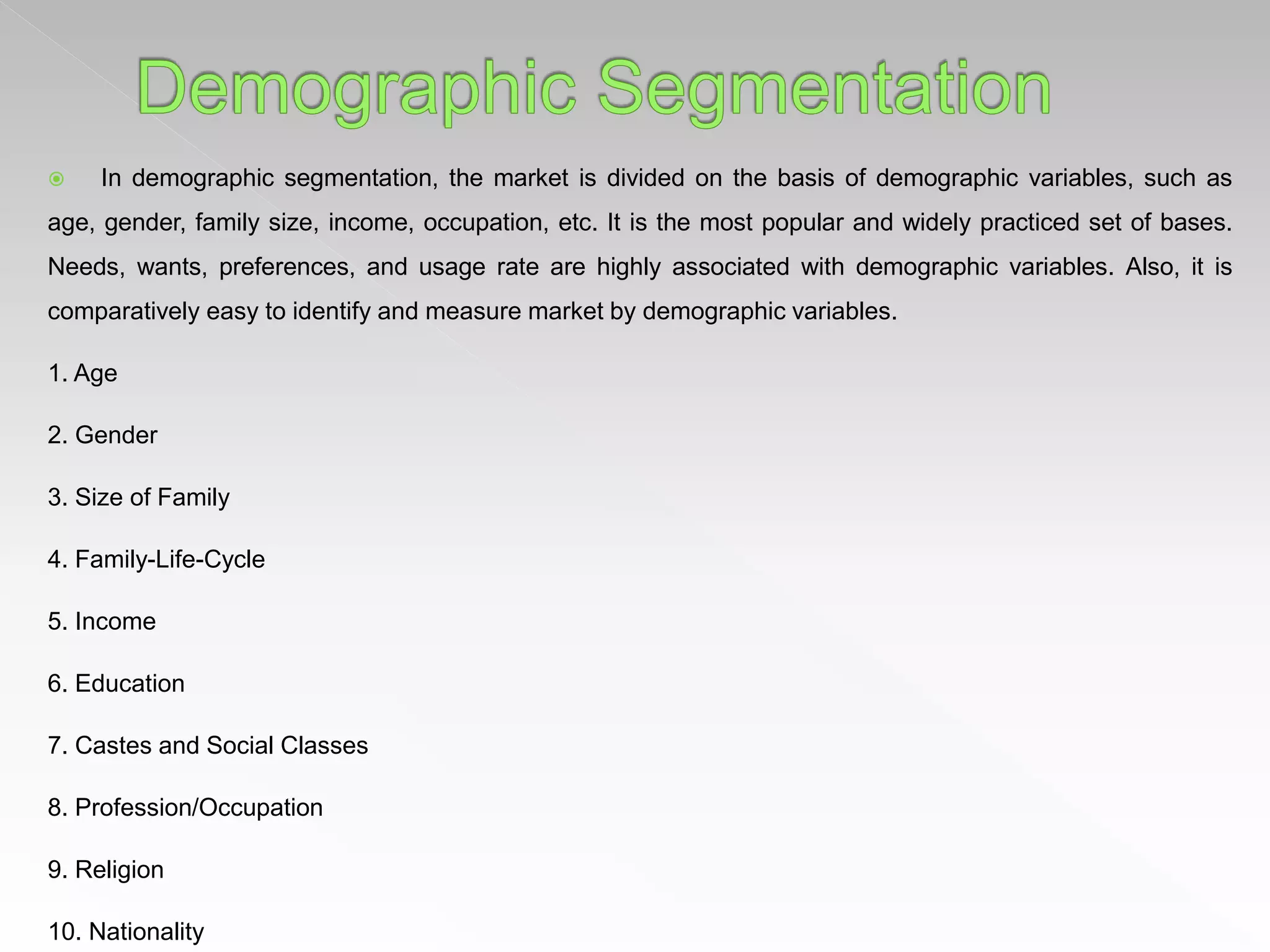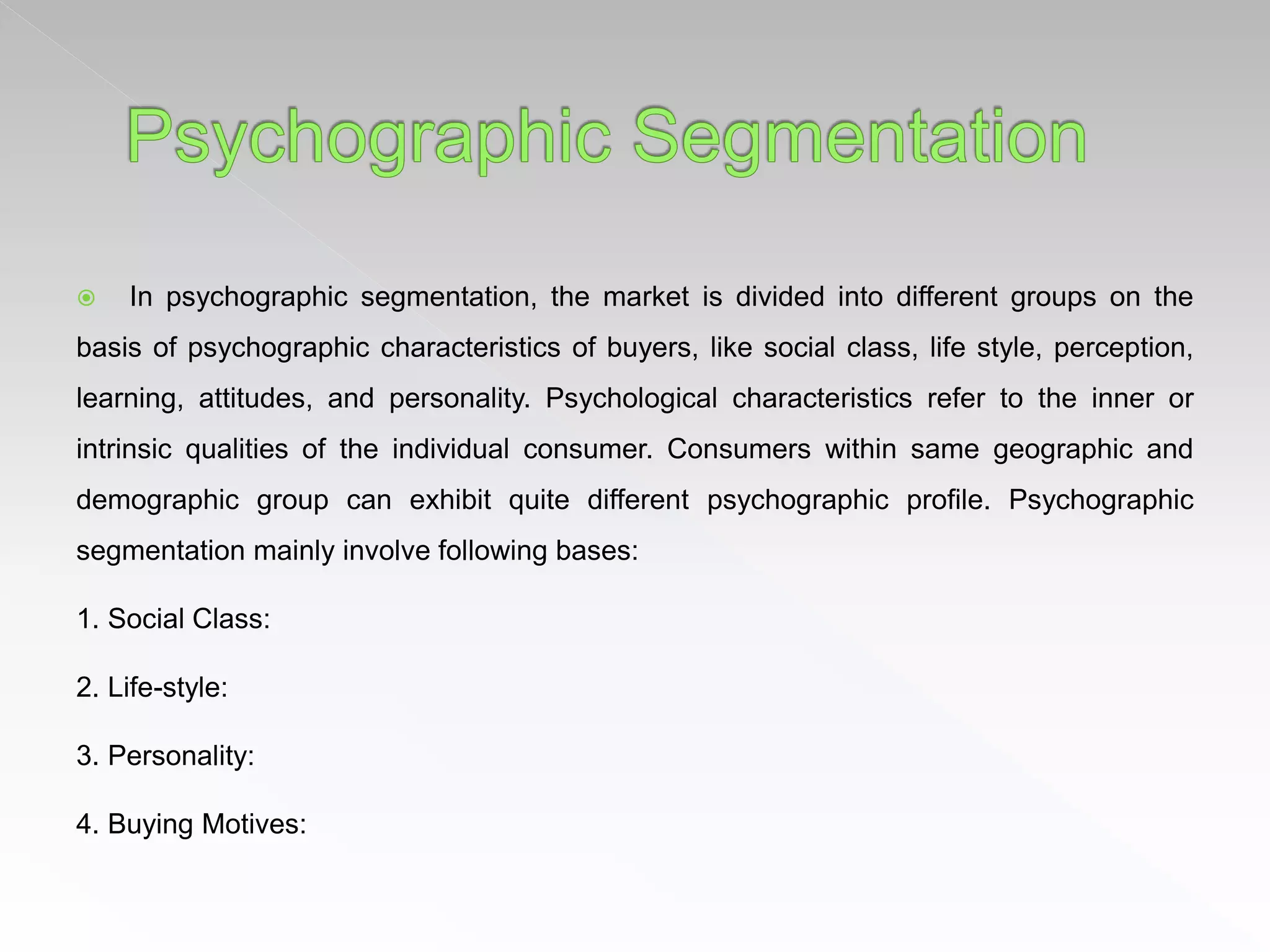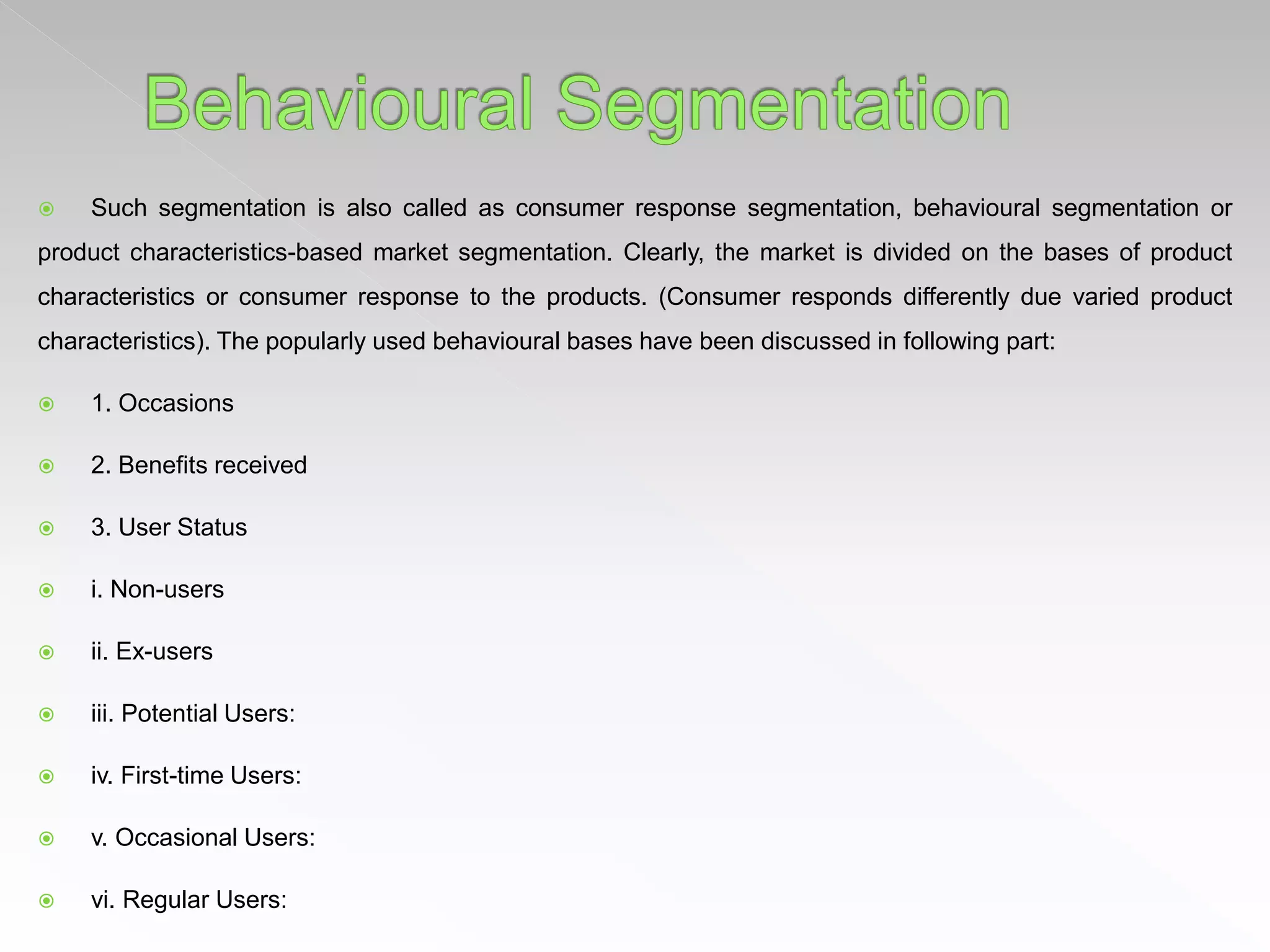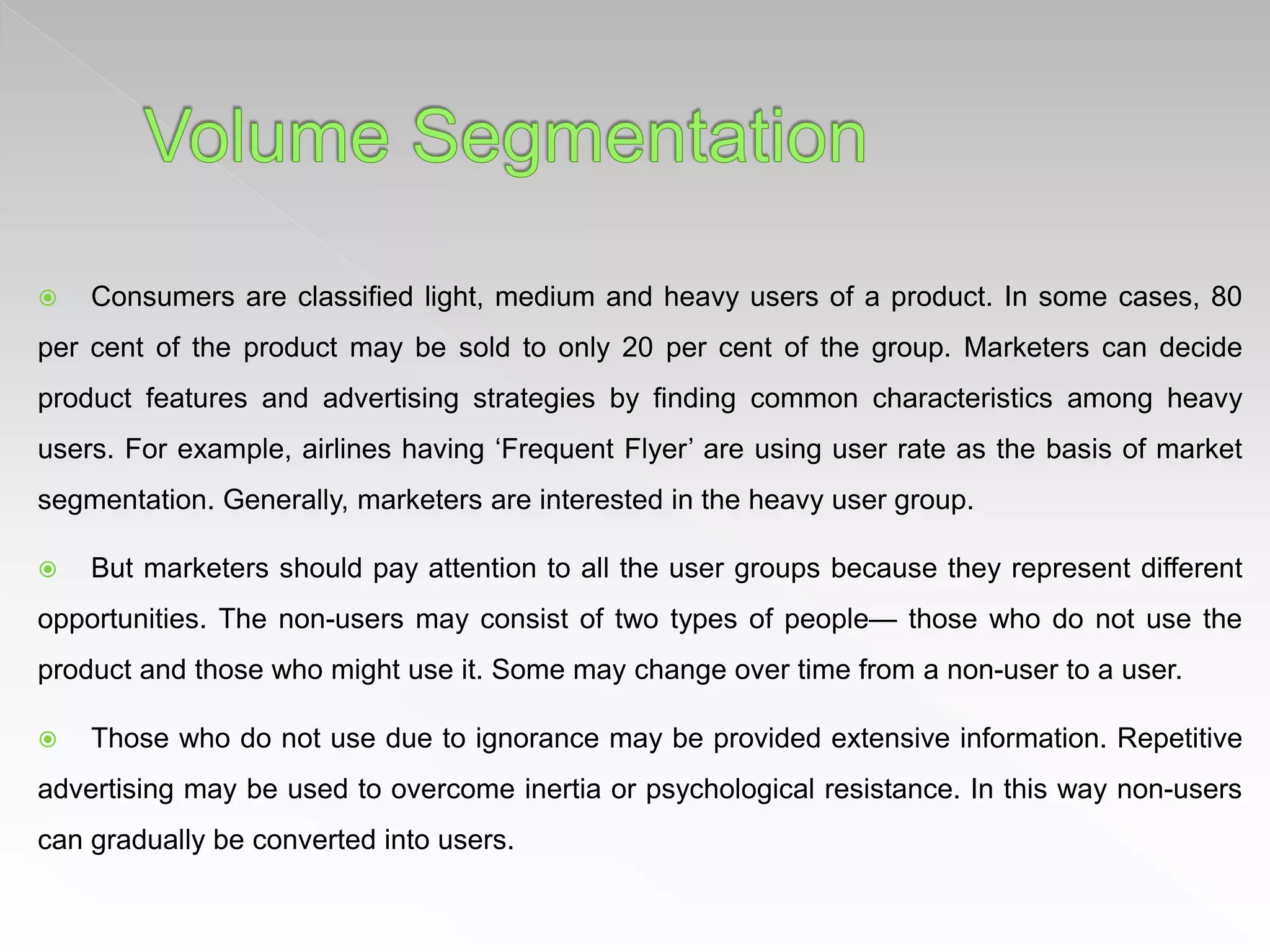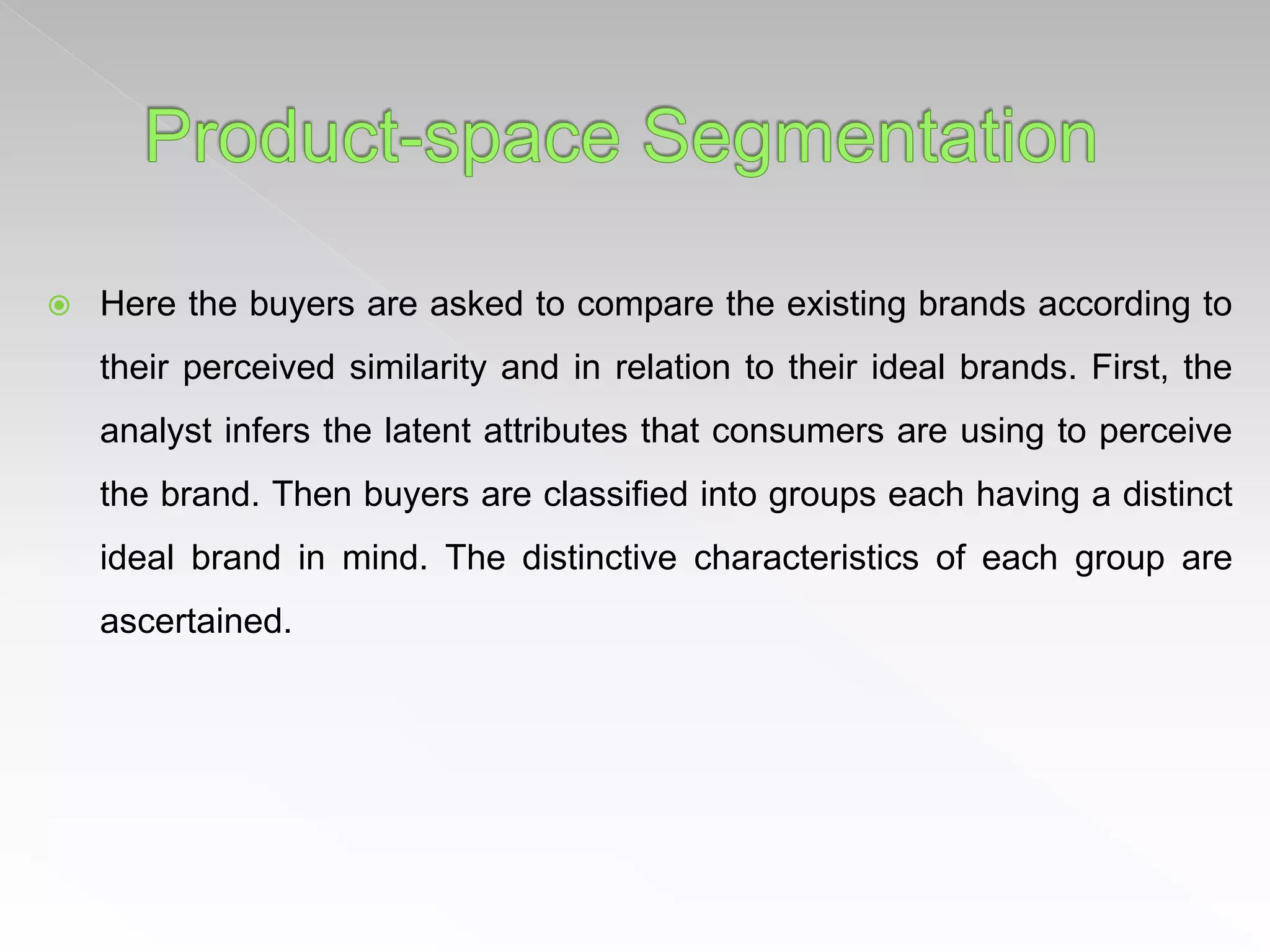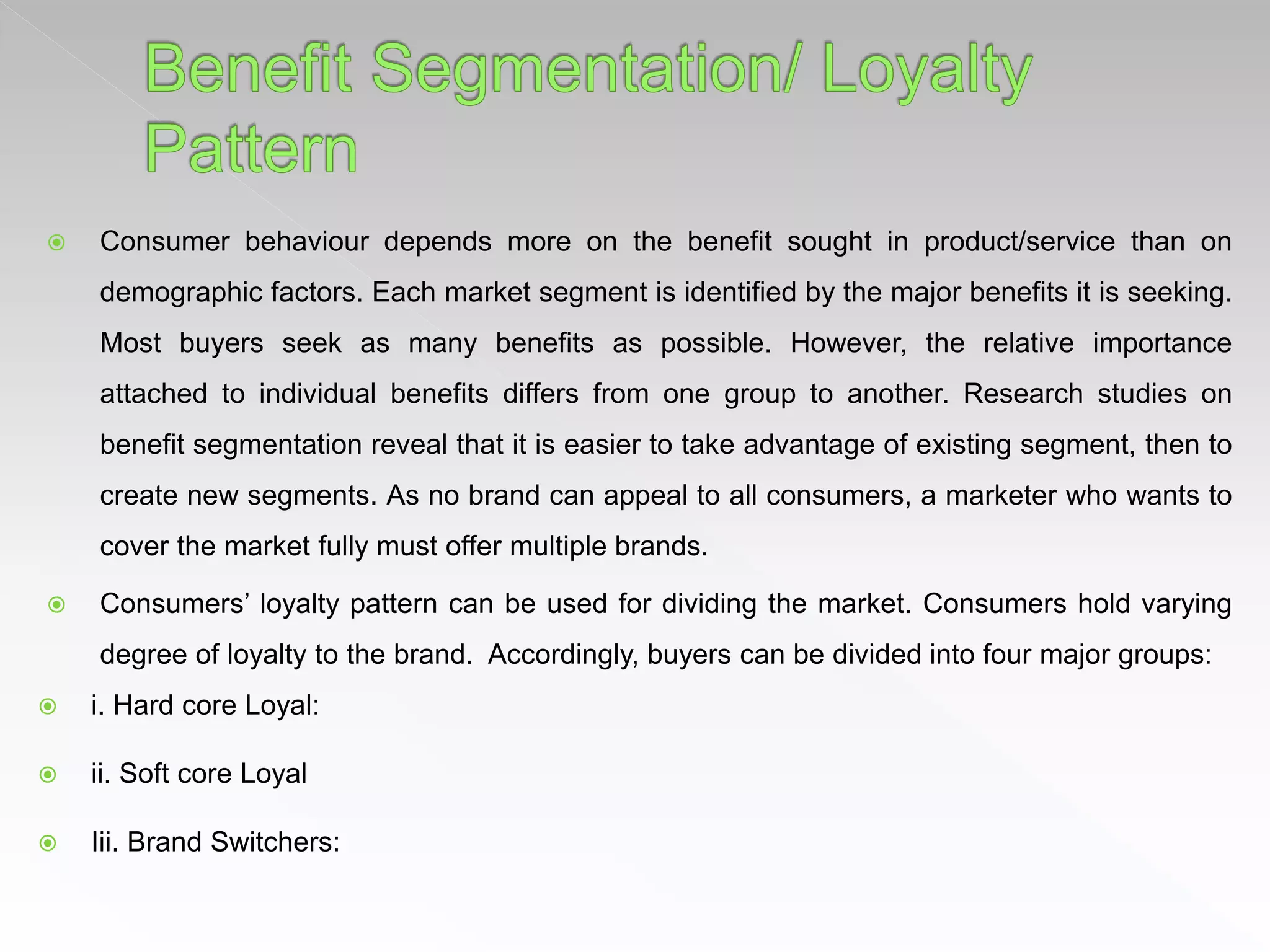This document discusses various bases for segmenting consumer markets. It describes 6 main types of segmentation: geographic, demographic, psychographic, behavioral, volume, and product space segmentation. For each type, it provides details on common segmentation bases such as age, gender, income, lifestyle, user status, benefits sought, and brand loyalty. The key information is that market segmentation involves dividing the total market into homogeneous subgroups based on consumer characteristics to allow companies to better target their marketing efforts.




